 In Observed Trials competition you ride through the course, standing, feet on the pegs. You earn points when you “dab” with your foot or cannot complete a “section” by staying inside the marked obstacle course. Speeds are below five miles per hour, the course may be 500 to 1000 feet in length. Like golf, getting points is bad; the rider with the lowest score wins in Observed Trials. Trials competition is purely a European invention most popular in Spain and Great Britain but adopted in the U.S. decades ago.
In Observed Trials competition you ride through the course, standing, feet on the pegs. You earn points when you “dab” with your foot or cannot complete a “section” by staying inside the marked obstacle course. Speeds are below five miles per hour, the course may be 500 to 1000 feet in length. Like golf, getting points is bad; the rider with the lowest score wins in Observed Trials. Trials competition is purely a European invention most popular in Spain and Great Britain but adopted in the U.S. decades ago.
Yamaha made their TY series from 80ccs up to 350cc’s with the original 250 hitting dealers for the 1974 model year. Like their European counterparts, Yamaha hired a champion rider to help with development, promotion and racing around the world. The great Mick Andrews gave a tremendous boost to the Yamaha brand. The TY250 proved good enough for Andrews to win the Scottish Six Days Trial in 1974, the first victory by a Japanese motorcycle in that challenging event. He won the SSDT again on the TY250 in 1975.
Trials bikes have responsive torquey motors, traditionally two-stroke, high ground clearance, small brakes, are very light weight, are narrow and tough to withstand crashes against rocks. Tires are run at extremely low pressures to increase contact patch and grip.
Manufacturers Greeves, Bultaco, Montesa and OSSA had a long history in designing and building great trials bikes, hiring the top riders for development and competition work. The “big four” Japanese manufacturers came later to the game with trick factory specials made for their teams, but also quality serial production machines. Today an on-line search for “trials motorcycle” will bring you a whole new crop of makers, some focused on electric trials bikes.
Most motorcycle competition involves getting through the course in the shortest amount of time, or at the highest rate of speed. Trials riders run at a slow pace, but the course is set on steep hills or mountainsides, has water crossings, vertical paths a mountain goat may give a double take. It’s an athletic competition more between riders than machines. Recently the event has also been run indoors on synthetic courses.
This 1974 Yamaha TY250 is graciously on loan from the Riherd family. It is on display with a range of motocross, enduro and trials competition bikes at the National Motorcycle Museum.
Specifications:
-
- Engine: Two-Stroke 7 Port Single, Air-Cooled
- Bore & Stroke: 70mm x 64mm
- Displacement: 246 cc’s
- Carburetion: Reed Valve / Mikuni VM26SS or Teikei Y26P
- Ignition: Electronic
- Lubrication: AutoLube
- Compression Ratio: 6:1
- Starting: Primary Kick
- Primary: Gear Driven
- Transmission: 5-Speed
- Clutch: Multi-Disk, Oil Bath
- Final Drive: Chain w/ Oiler
- Horsepower: 16HP
- Frame: Double Loop/Steel Tubing
- Suspension: Telescopic Fork / Twin Shocks / Swingarm
- Brakes: Internal Expanding Drum / Drum
- Wheels & Tires: 2.75 x 21 / 4.00 x 18 Trials
- Wheelbase: 51 Inches
- Weight: 212 Pounds
Leave a Reply
Want to join the discussion?Feel free to contribute!


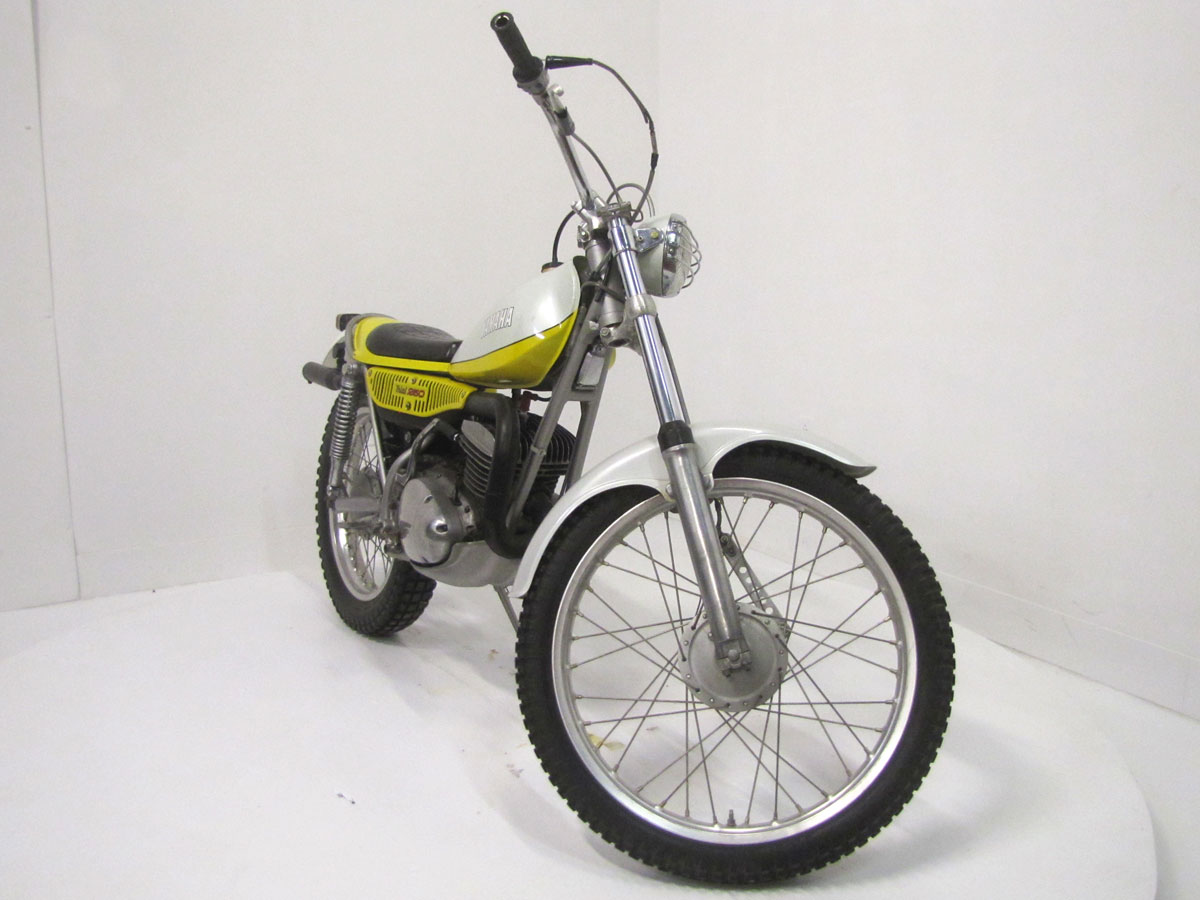
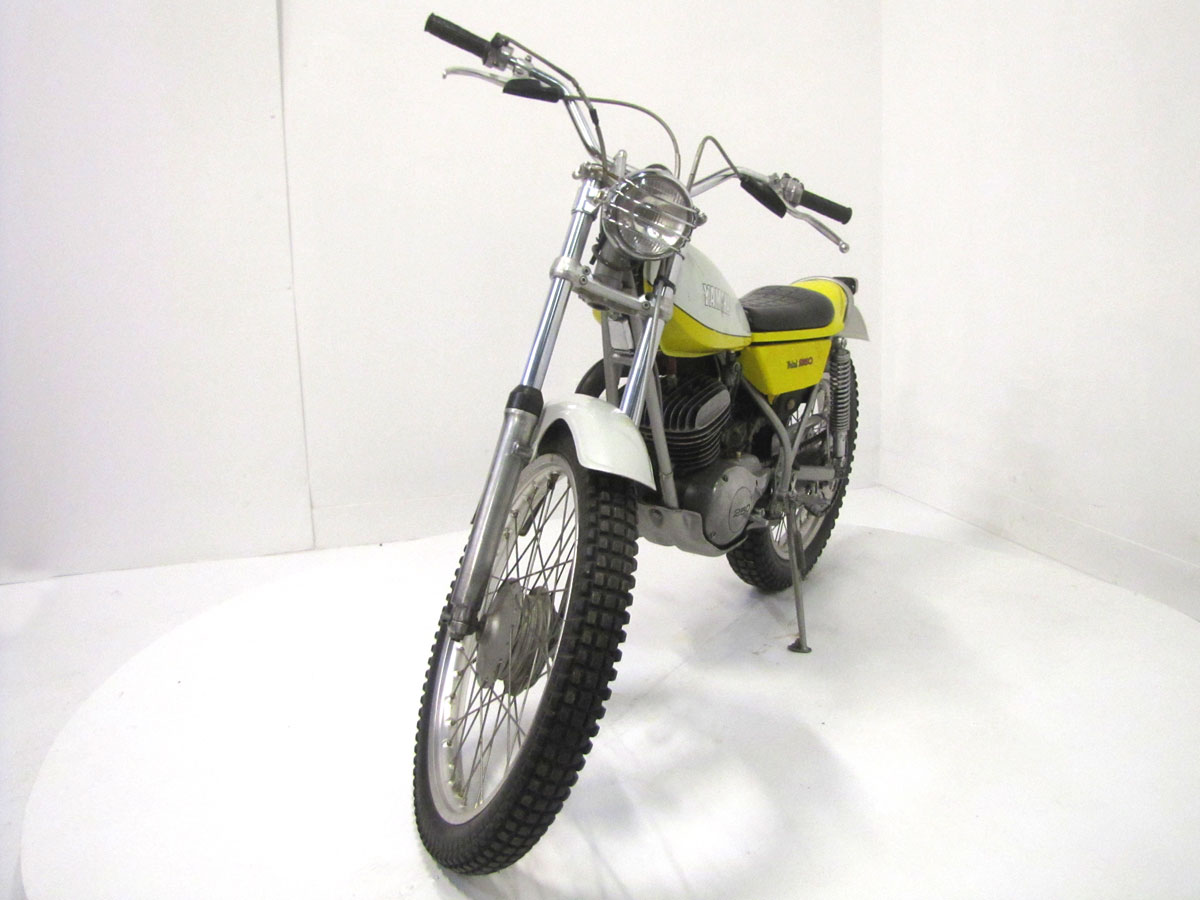


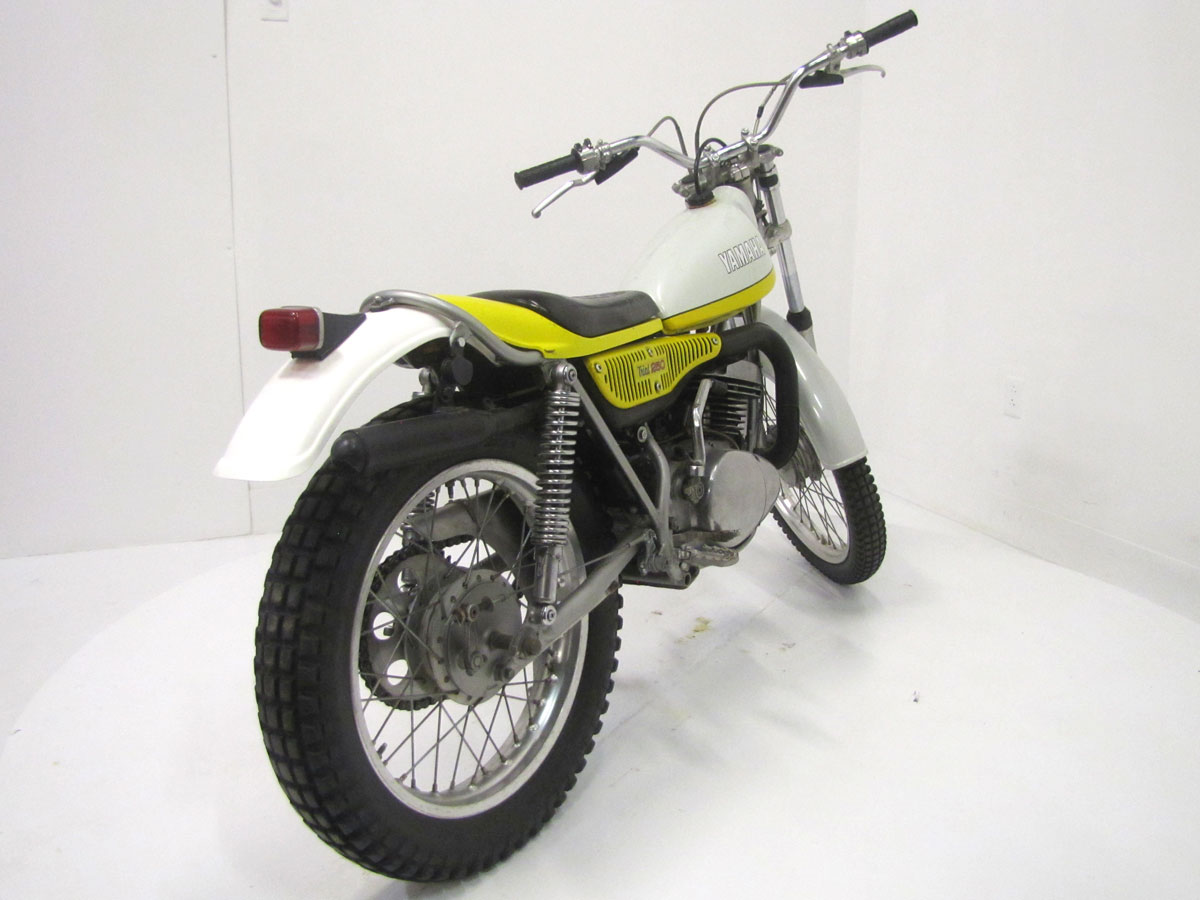


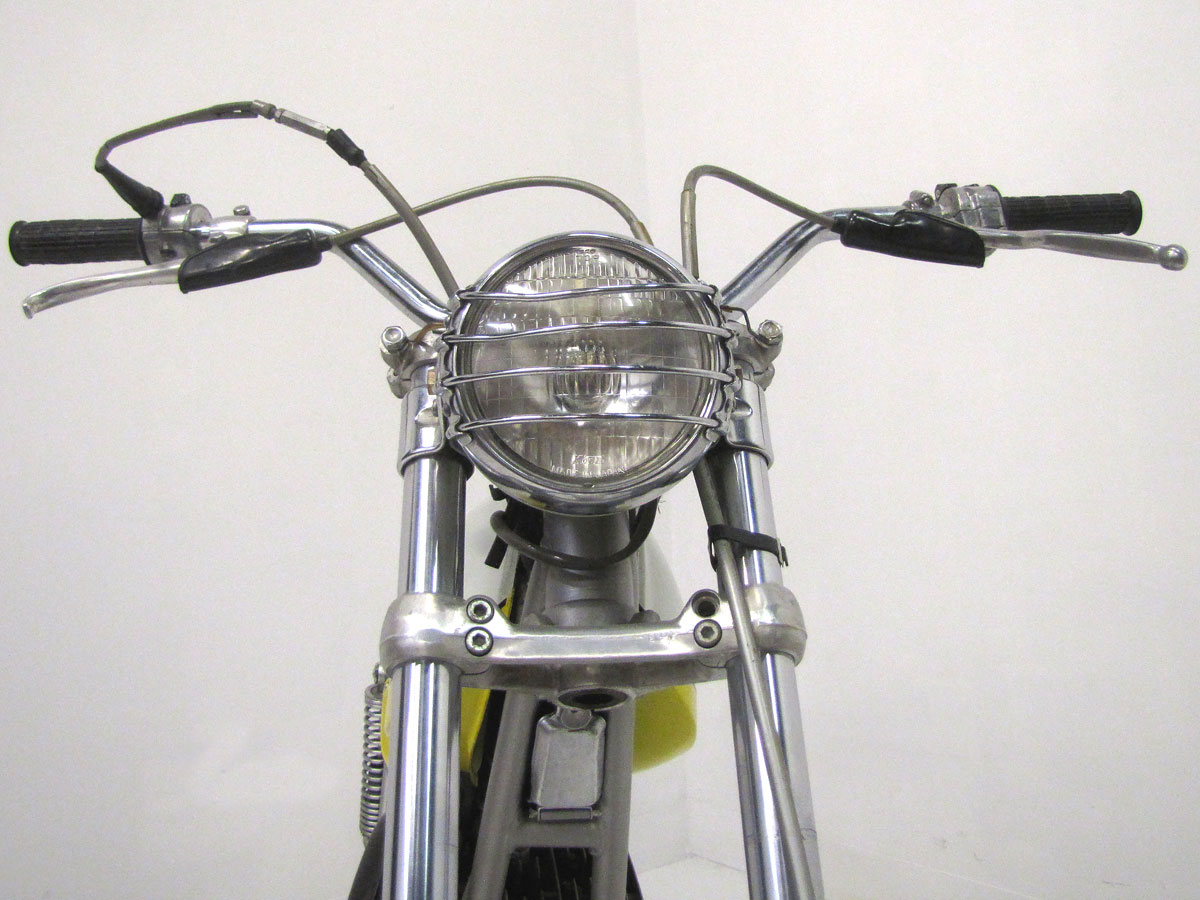


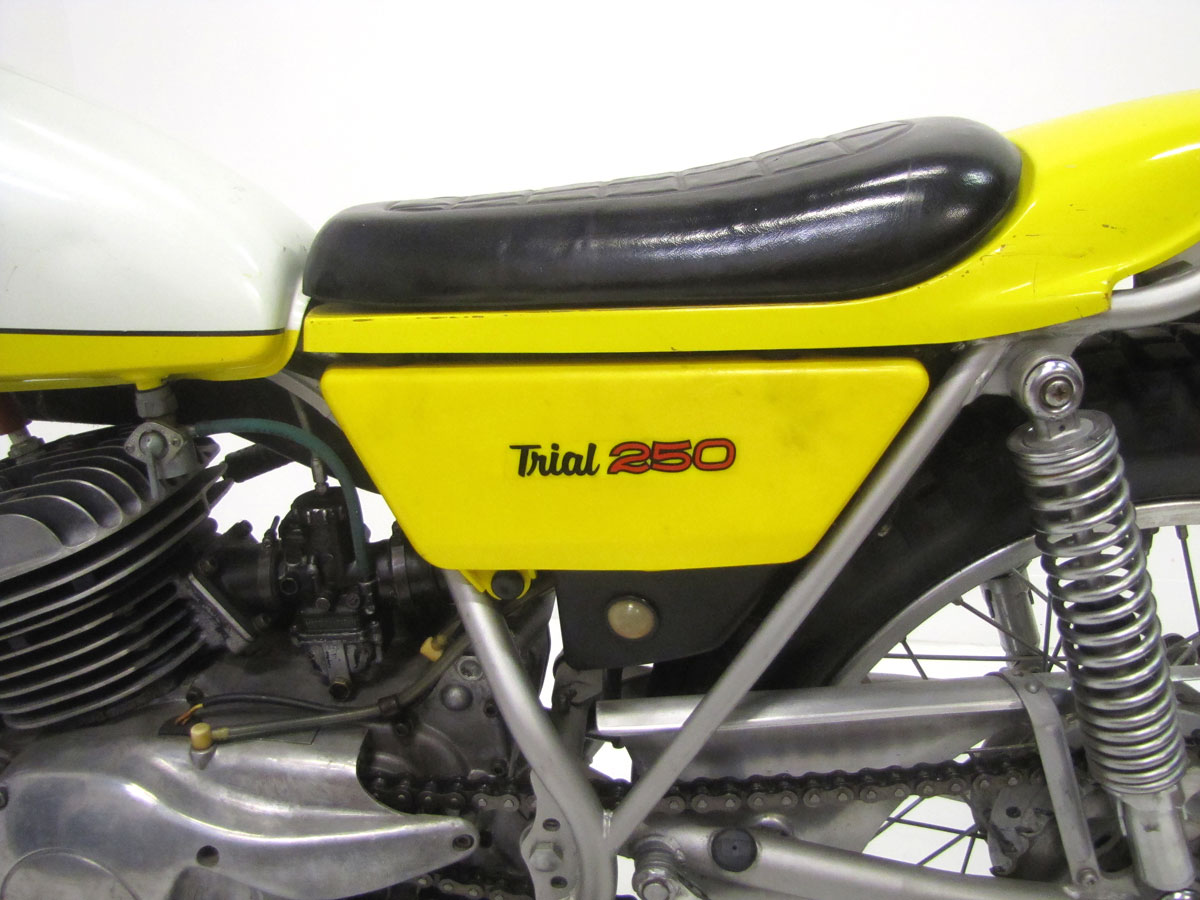



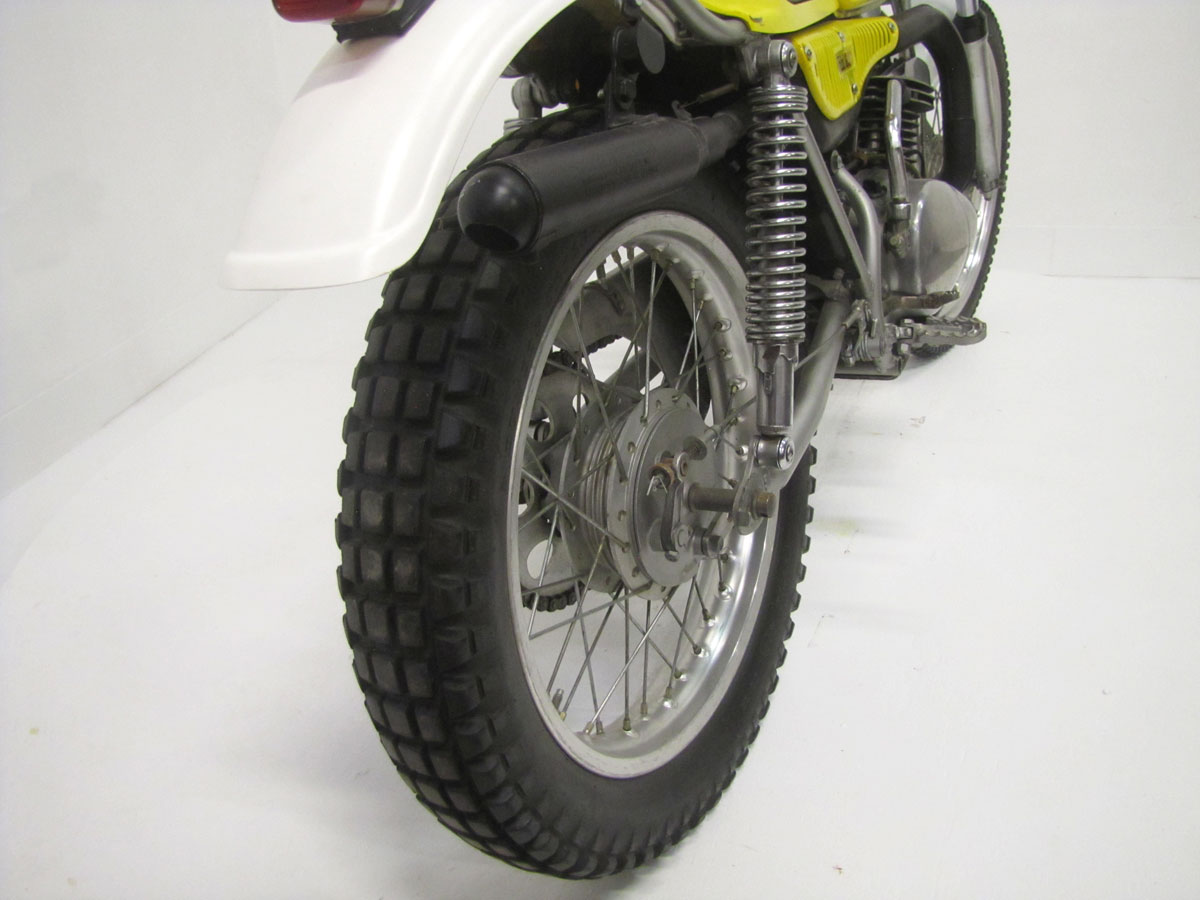
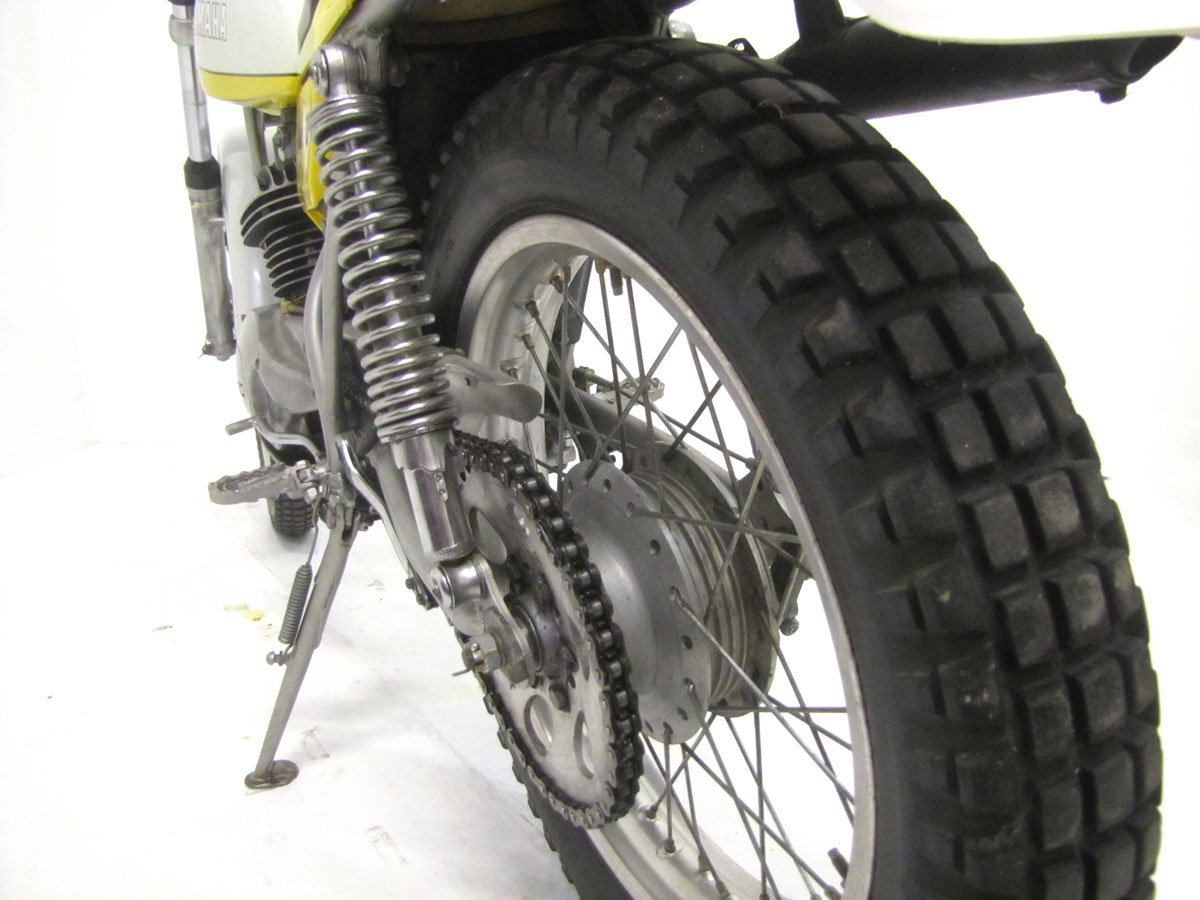







I own this exact bike – a 1974 TY250. A friend of mine, Ben Schade of Iowa, willed it to me before passing away a few years ago. This particular bike needs some TLC. Does anyone know where to get parts for a functional restoration?
HVC Cycle in Lincoln, Nebraska is a great source for parts and tech advice.